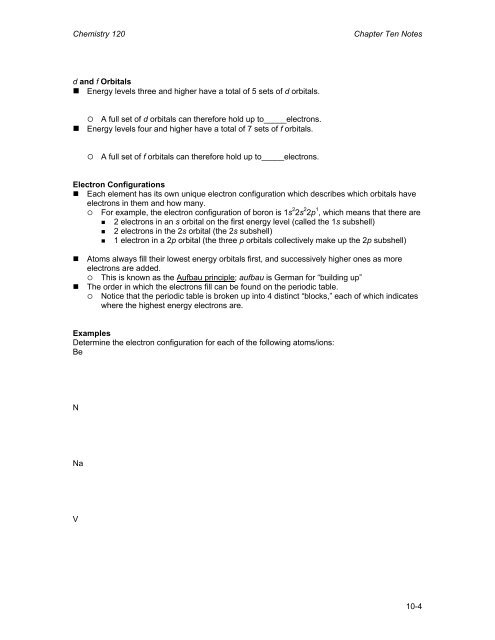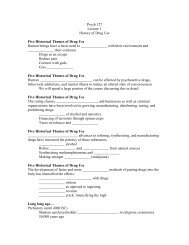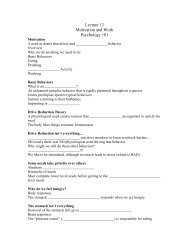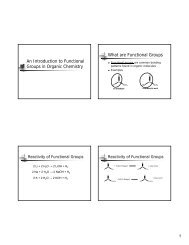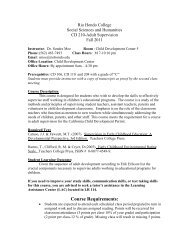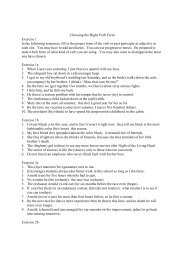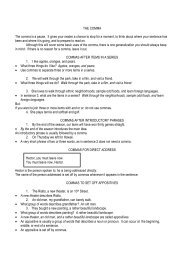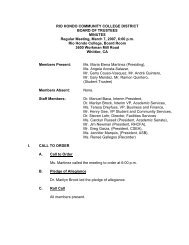Create successful ePaper yourself
Turn your PDF publications into a flip-book with our unique Google optimized e-Paper software.
<strong>Chemistry</strong> <strong>120</strong><br />
Chapter Ten <strong>Notes</strong><br />
d and f Orbitals<br />
• Energy levels three and higher have a total of 5 sets of d orbitals.<br />
◦ A full set of d orbitals can therefore hold up to_____electrons.<br />
• Energy levels four and higher have a total of 7 sets of f orbitals.<br />
◦ A full set of f orbitals can therefore hold up to_____electrons.<br />
Electron Configurations<br />
• Each element has its own unique electron configuration which describes which orbitals have<br />
electrons in them and how many.<br />
◦ For example, the electron configuration of boron is 1s 2 2s 2 2p 1 , which means that there are<br />
• 2 electrons in an s orbital on the first energy level (called the 1s subshell)<br />
• 2 electrons in the 2s orbital (the 2s subshell)<br />
• 1 electron in a 2p orbital (the three p orbitals collectively make up the 2p subshell)<br />
• Atoms always fill their lowest energy orbitals first, and successively higher ones as more<br />
electrons are added.<br />
◦ This is known as the Aufbau principle; aufbau is German for “building up”<br />
• The order in which the electrons fill can be found on the periodic table.<br />
◦ Notice that the periodic table is broken up into 4 distinct “blocks,” each of which indicates<br />
where the highest energy electrons are.<br />
Examples<br />
Determine the electron configuration for each of the following atoms/ions:<br />
Be<br />
N<br />
Na<br />
V<br />
10-4


